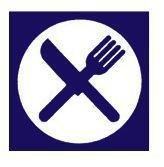SAS Urban Survival Handbook (72 page)
Read SAS Urban Survival Handbook Online
Authors: John Wiseman
Tags: #Health & Fitness, #Reference, #Survival, #Fiction, #Safety, #Self-Help, #Personal & Practical Guides, #General, #Survival Skills
REMEMBER
Don’t create extra dangers yourself: Don’t smoke – and NEVER drop burning cigarettes. Don’t drop drinks cans or other objects which could cause someone to trip or fall. NEVER throw any object – even at the referee! Cheer your own team, but DON′T abuse rival supporters. Acting like a hooligan will not win you friends!
ANGLING
 Angling means long hours spent sitting at the water side waiting for ‘a bite’. Makeshift stools or tree stumps don’t offer the body much support. Provide yourself with a comfortable chair—it is as important as a comfortable sitting position at work. Make sure you get up and walk around at frequent intervals.
Angling means long hours spent sitting at the water side waiting for ‘a bite’. Makeshift stools or tree stumps don’t offer the body much support. Provide yourself with a comfortable chair—it is as important as a comfortable sitting position at work. Make sure you get up and walk around at frequent intervals.
Night anglers, especially, may be exposed to the cold and wet. Remember that temperatures drop at night, so take suitable clothing for the chilly hours. If you do carry a drink laced with alcohol, you take the extra risk of lowering your blood temperature. You may also lose your judgement and fall in, exposing yourself to the danger of hypothermia.
Avoid fishing on your own. Apart from the companionship and competition fishing with friends can provide, it also means that there is someone there who can help in an emergency.
In an attempt to get good bait, some anglers use substances like carbon tetrachloride to subdue wasps and allow access to wasp larvae. Most chemicals used for this purpose are highly toxic—even if exposure is short term.
The risks of water-related sports include the danger of drowning. Angling clubs should be committed to training their members in resuscitation techniques.

WARNING
Fishing near overhead power lines presents extra dangers – especially with carbon fibre rods. Don’t risk electrocution (see SAFETY FIRST: Electricity).
PLAYGROUNDS
Although playgrounds are far safer for children than playing on the streets, or in derelict buildings or waste dumps, there are still many hazards to be borne in mind. Playgrounds vary enormously – some have adult supervisors or are directly controlled within parks, others may go for years without proper maintenance and may be unsafe. Most parents expect older children to have some ‘rough and tumble’ play, but younger children may be at risk and should never be left to play unsupervised.
Apart from the dangers of vandals and bullies, who seem unable to leave the playground behind, look out for some of the following:
- ■
Ground surfaces should be impact absorbing – a fall onto concrete or tarmac could be very serious. Fatal head injuries have been sustained by falling less than two feet. Even grass-covered soil is too hard. - ■
Litter – especially broken glass - ■
There should be a sign to tell you the rules of the playground (rules that no one ever reads) and who to go to for assistance. There should be a telephone close enough to be used for any emergencies. The sign should give details of the nearest hospital casualty unit. - ■
Swings, slides and climbing frames should be far enough apart for safety – also no piece of apparatus should be close to a wall or steps. If a child should fall from any piece of apparatus, what would they land on? - ■
Is all the apparatus regularly maintained? - ■
Swings for small children should have retaining bars to prevent them slipping off the seats. Slides and climbing frames should have good handrails and handholds.

WARNING
Playgrounds are very often near or in areas where people walk their dogs. There are very real dangers to children from parasites carried in dog mess. These parasites persist in the soil and are very common. Small children, with their lack of discernment, are particularly at risk (see HEALTH: Zoonoses).
RADIO-CONTROLLED MODELS
 Almost any full-size vehicle can be reproduced in model form and operated by radio control. Modellers build boats, cars, aeroplanes and helicopters which can take to the water, road or air like their full-size counterparts—with some of the same (and added) safety risks.
Almost any full-size vehicle can be reproduced in model form and operated by radio control. Modellers build boats, cars, aeroplanes and helicopters which can take to the water, road or air like their full-size counterparts—with some of the same (and added) safety risks.
Model aeroplanes and boats in particular must be constructed with a great deal of care and often with the same structural integrity as the real thing. A fault in design or construction can spell disaster. At the building stage, modellers must be careful with the hazardous materials they are using like cellulose-based products and glues which give off dangerous fumes, and flammable/toxic epoxy resins and fibre glass (see POISONS).
Model aeroplanes create special risks for operators. Propellers are the main cause of injury—the average speed of a model aeroplane propeller is 17,000 rpm—and the face, chest and hands are particularly vulnerable. Flying radio-controlled models requires a lot of skill and dangerous crashes are most common among the inexperienced.
The best way to learn control skills is by joining a club. Membership is monitored so that users do not operate on the same frequency, which could lead to loss of control. Clubs enforce other safety rules – for example, model aeroplanes should always fly beneath controlled airspace to avoid the risk of interfering with REAL air-traffic control – all designed to make this popular hobby safer for everyone.
FIREWORKS
The attitude to fireworks varies enormously from country to country. Most have legislation which prevents young children from buying fireworks. Despite warnings, which are repeated again and again:
- ■
NEVER return to fireworks which fail to light - ■
ALWAYS light fireworks at arm’s length, with a taper - ■
Move well back as soon as the firework has lit - ■
ALWAYS aim rockets and fireworks which shower sparks or shoot out missiles AWAY from spectators - ■
One person should be in charge of the fireworks during a display – or a well-organized team. Fireworks should be lit within a cordonned-off area. Children should be kept well away. - ■
NEVER hold fireworks – unless specifically stated on the label that you may do so. Even so, hold at arm’s length and point away from your face. Some ‘safe’ fireworks can cause severe injuries - ■
ALWAYS lock pets indoors – some people and young children may also be frightened by the newer ‘improved’ bangs - ■
Keep unlit fireworks well covered – away from sparks and sources of heat
REMEMBER
What goes up must come down. In most cases the remains of rockets and other airborne fireworks DO come back to earth again. Try to aim fireworks away so that they will not rain down upon people, buildings, cars or anywhere where there is a fire risk.
ON THE TOWN
 When you go out for recreation you may be concerned mainly with avoiding any potential dangers on the streets—and probably give little thought to the safety of restaurants and places of entertainment.
When you go out for recreation you may be concerned mainly with avoiding any potential dangers on the streets—and probably give little thought to the safety of restaurants and places of entertainment.
There are laws in most countries which cover hygiene in cafés and restaurants and fire regulations for places of entertainment, shops and fairgrounds. Can you be sure that these regulations are being adhered to?
Checking restaurant hygiene is difficult. In some countries customers are welcome to walk into the kitchen, in others it might seem an unusual request—but not an unreasonable one. Any reputable establishment should be proud to show clients where food is prepared.
While most establishments may be concerned to ensure your safety as well as your continued patronage, calls from inspectors are probably infrequent and you will be dependent upon the vigilance and sense of responsibility of the staff. Attitudes to safety may sometimes be extremely casual or members of the public may often be uncooperative—objecting to not being allowed to stand where they wish at a concert or in a theatre, for example.
Be responsible yourself. Never obstruct an exit or exit route. If you see regulations being ignored—perhaps an emergency exit locked or blocked—have a word with the manager in the interests of everyone’s safety.
Better safe than sorry
When you go to a restaurant, a theatre, a cinema or a nightclub, make sure you know where the exits are and work out the easiest routes to them. It can save precious moments, if there should be the need to get out quickly. It only takes a moment as you go in and settle down – once you get into the habit it will become automatic wherever you go. There have been very serious fires in many public places in recent years – involving the loss of many lives.
If possible leave coats and bags in a cloakroom. Even in normal circumstances it is easy for people to stumble over them in the dark as they pass along a row of seats or walk down an aisle. Even on a seat next to you, clothing and bags may be stolen—especially in the dark.